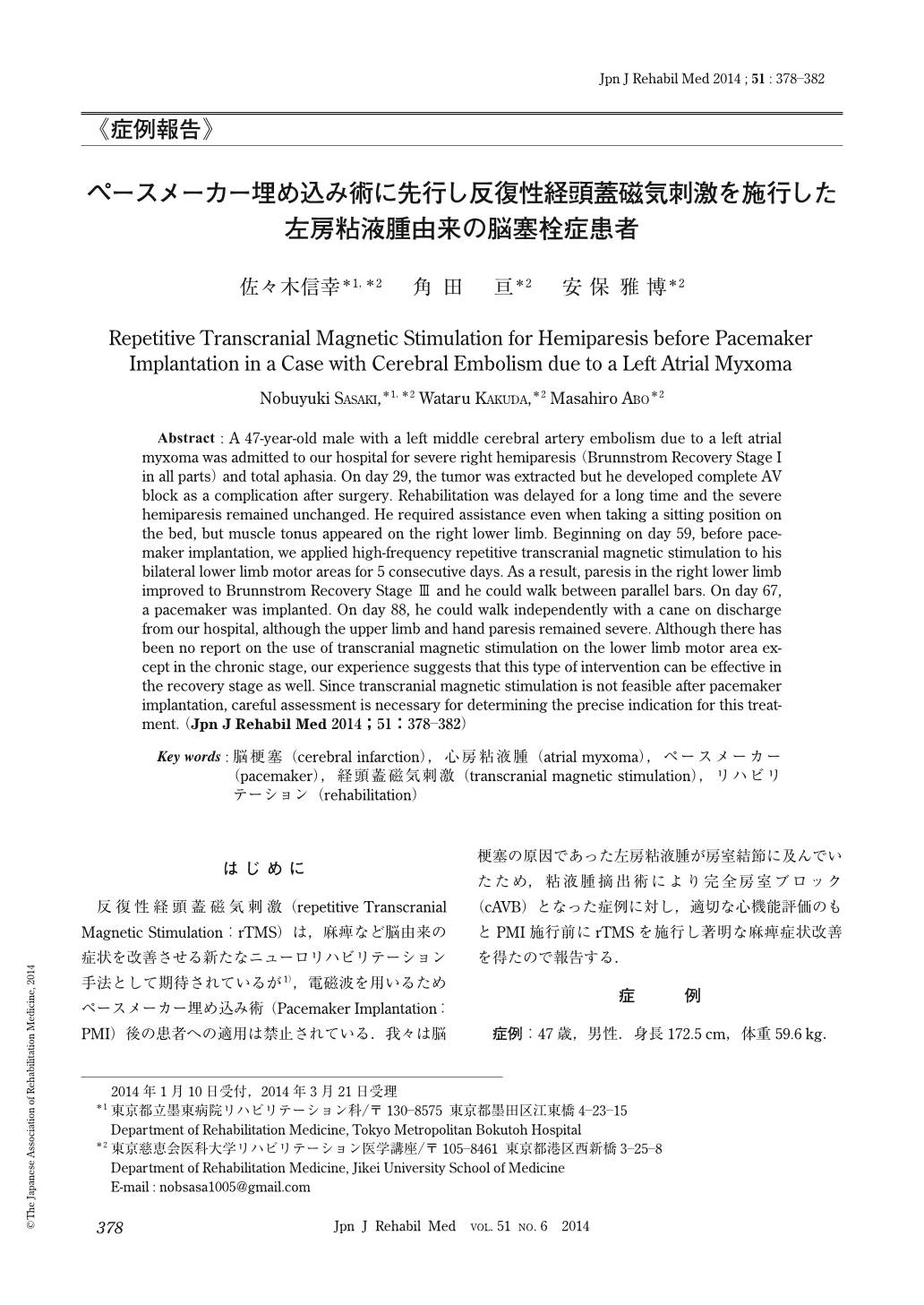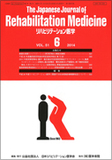Japanese
English
- 販売していません
- Abstract 文献概要
- 1ページ目 Look Inside
- 参考文献 Reference
はじめに
反復性経頭蓋磁気刺激(repetitive Transcranial Magnetic Stimulation:rTMS)は,麻痺など脳由来の症状を改善させる新たなニューロリハビリテーション手法として期待されているが1),電磁波を用いるためペースメーカー埋め込み術(Pacemaker Implantation:PMI)後の患者への適用は禁止されている.我々は脳梗塞の原因であった左房粘液腫が房室結節に及んでいたため,粘液腫摘出術により完全房室ブロック(cAVB)となった症例に対し,適切な心機能評価のもとPMI施行前にrTMSを施行し著明な麻痺症状改善を得たので報告する.
Abstract : A 47-year-old male with a left middle cerebral artery embolism due to a left atrial myxoma was admitted to our hospital for severe right hemiparesis (Brunnstrom Recovery Stage Ⅰ in all parts) and total aphasia. On day 29, the tumor was extracted but he developed complete AV block as a complication after surgery. Rehabilitation was delayed for a long time and the severe hemiparesis remained unchanged. He required assistance even when taking a sitting position on the bed, but muscle tonus appeared on the right lower limb. Beginning on day 59, before pacemaker implantation, we applied high-frequency repetitive transcranial magnetic stimulation to his bilateral lower limb motor areas for 5 consecutive days. As a result, paresis in the right lower limb improved to Brunnstrom Recovery Stage Ⅲ and he could walk between parallel bars. On day 67, a pacemaker was implanted. On day 88, he could walk independently with a cane on discharge from our hospital, although the upper limb and hand paresis remained severe. Although there has been no report on the use of transcranial magnetic stimulation on the lower limb motor area except in the chronic stage, our experience suggests that this type of intervention can be effective in the recovery stage as well. Since transcranial magnetic stimulation is not feasible after pacemaker implantation, careful assessment is necessary for determining the precise indication for this treatment.

Copyright © 2014, The Japanese Association of Rehabilitation Medicine. All rights reserved.


